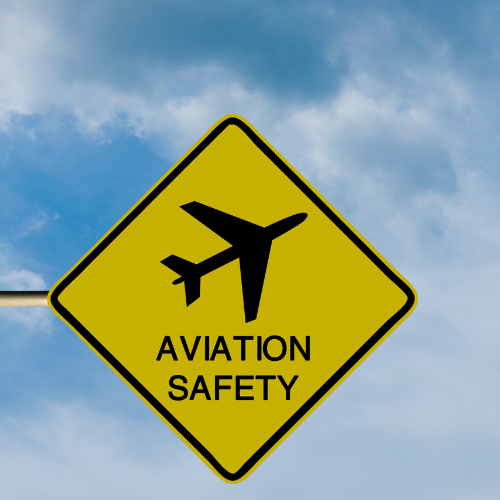Does an incident- and accident-free history mean an organization is safe? Conversely, does an incident or accident occurrence mean an organization’s Safety Management System (SMS) has failed?
Customers, as well as the general public, certainly like to hear that an aviation company is accident-free. The industry itself perpetuates the myth that a long history without incident or accidents means the company is safe, but such a history can be attributable as much to luck as to a mature SMS. The reality is, even organizations with a mature SMS and solid safety culture can have an occurrence.
So, does an accident or incident indicate an SMS failure? And how should an organization — whether an aircraft operator, repair station, ground handler, flight school, or any other aviation endeavor — move forward after an occurrence, in terms of working within their SMS?
Jim Garrett is the Director of Safety at Davinci Jets, a Charlotte, North Carolina-based aircraft management and charter company. As a Stage 3 International Standards for Business Aircraft Operations (IS-BAO) operator, Davinci Jets has demonstrated the organization’s commitment to safety and implementation of its SMS at the highest level. According to the International Business Aviation Council, which administers the IS-BAO standard, Stage 3 verifies full integration of safety management activities and a sustained positive safety culture.
Even at that high standard, however, incidents and accidents can still occur, as Garrett recently shared.
“We’ve had opportunities to conduct our own event investigations and participated in investigations with industry partners,” said Garrett. “While we first look at any incident or accident to see where failures occurred, a well-functioning SMS will also quickly reveal where we succeeded.”
Garrett says there’s a tendency to believe an incident or accident is the result of something “slipping through” the safety management process, but his organization has learned to review the event and find ways to improve their policies and procedures.
“When we do this review, we affirm that the SMS didn’t fail us,” Garrett said.
Don Chupp is President and CEO of Fireside Partners, which specializes in emergency response planning, training, coaching and implementation. Minor incidents, particularly ground-handling incidents, are on the rise, according to Chupp, so he encourages operators to look at the entire “ecosystem.”
“Even if you’re an organization with a very robust SMS, you practice it religiously, and you are diligent in following your own policies and procedures, we are all part of a very large ecosystem,” said Chupp. “We can’t control other parts of the ecosystem, like ground-handling functions or other aircraft.”
You can, however, partner with your frequent vendors to try to influence that ecosystem around you. Choose FBOs, repair stations, and other partners that have robust safety systems, especially at your home base and airports you frequent.
Internal response to an incident or accident, including working within your SMS processes, is also critical.
“How an organization behaves after an accident or incident says a lot about who they are – regardless of the posters on the wall,” said Chupp, who explained that some organizations don’t react at all, while others over-respond with excessive or punitive actions.
It’s important to not sweep incidents — even minor ones — under the rug. Although there’s often a desire to just “make it go away,” experts agree the primary goal after an incident or accident is to learn from it. Asking the right questions will help your organization grow and develop into something stronger as a result of the event.
“One person’s embarrassment or desire to dismiss an incident as ‘inconsequential’ is overcome with the help of another’s cultural maturity, telling us that the outcome will be for the greater good,” said Garrett.
Keith DeBerry, NATA’s Chief Operating Officer, says even “acts of God” that are not a result of human error — for example, a bird strike or hail damage — can bring about mitigation efforts or mitigation of consequences through revised policies and procedures. After reviewing a bird strike incident, perhaps an operator will choose to not visit a particular airport during the migration season or will encourage the airport to install proper bird hazing equipment.
Investigating the root cause of an incident or accident often leads an organization to the Safety Assurance and Promotion aspects of an SMS, Garrett said.
Some organizations jump to re-training employees to avoid a similar future incident, but DeBerry says that isn’t always the answer. If additional training is often called for, it’s possible the organization is hiring the wrong people, training is insufficient to begin with, or policies and procedures are inadequate.
More than anything, DeBerry believes senior leadership must communicate directly and honestly — and ensure a feedback loop is complete.
“People want to see senior leadership practicing what they preach,” said DeBerry.
Appropriate public response following an incident or accident is also important.
“We tend to be a private industry, so the public and the media draft the story in the vacuum. After an accident or incident, you can’t withdraw. You have to be honest. Use third-party resources to help tell the story,” said Chupp.
An incident or accident, especially one that receives media attention, can lead to employee turnover and secondary personnel and safety issues — even if the consequences are minor, such as a runway or taxiway excursion.
“There will be organizational and cultural angst following such an event, but it has to be brought to the surface and talked through. It takes respect and trust to really learn and develop from an incident or accident,” said Chupp, adding that resources are available to help coach senior leadership through these discussions with their teams.
Does experiencing an incident or an accident mean your SMS failed? Maybe – but more likely, sometimes bad things happen that are out of your control. How you respond to that event by using the processes established in your SMS will ultimately make your organization stronger.
“SMS isn’t a bulletproof vest, but if you believe in data and numbers, you see the majority of aviation accidents are with organizations that aren’t actively engaged in safety efforts within the industry,” said Chupp.






